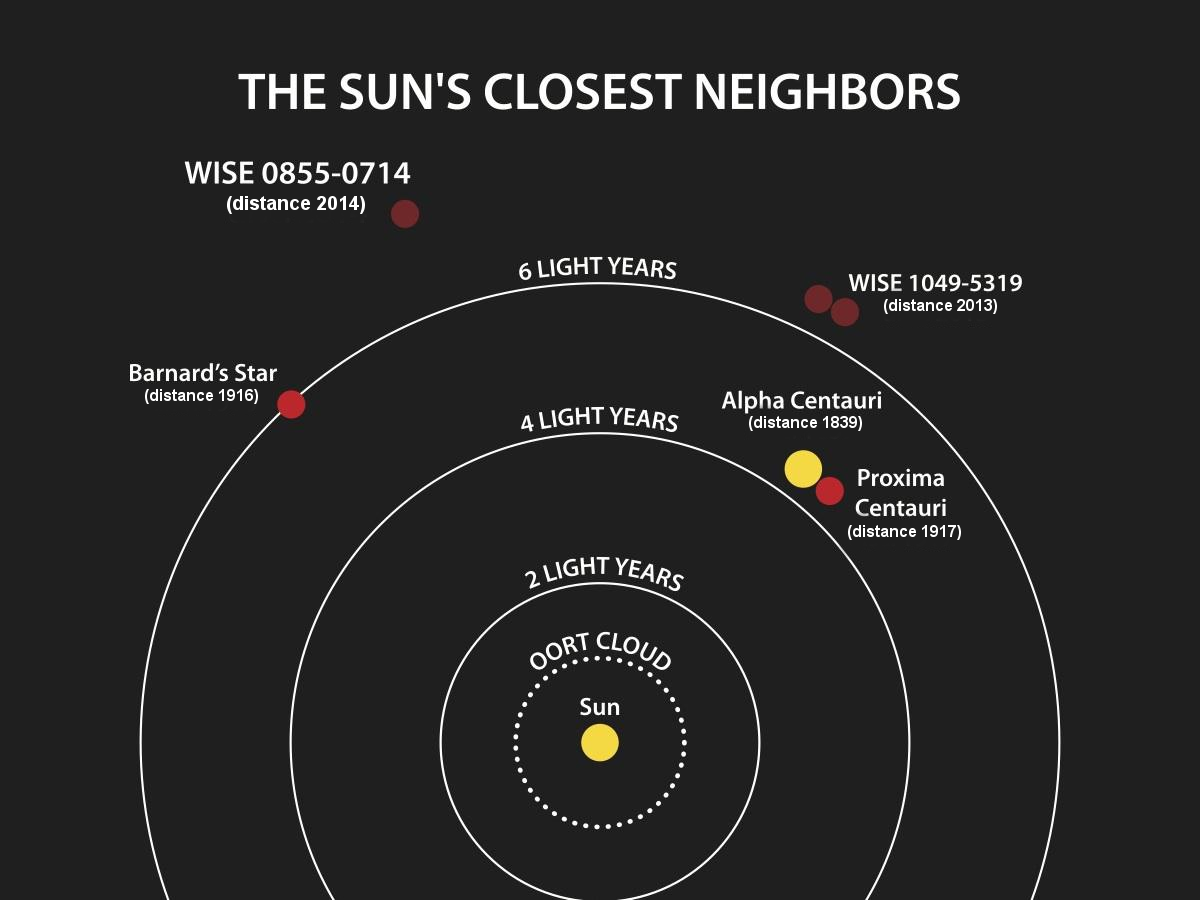
An ice-cold star has been found by American astronomers relatively nearby our solar system. The star is situated only 7.2 light years from the Sun.
Being only 7,2 light years away, it is among the closest stars in our neighborhood, at a number four. With Proxima Centauri being the closest star at 4,24 light years ways. It being part of the Alpha Centauri triple star system, which is the closest star system. Then we have Barnard star at about 6 light years away, the Luhman 16 star system and then this newfound star named WISE 0855–0714.
The fact that the star has been elusive to our knowledge until now relates to its size and temperature. The star has not been detected earlier because of it being both small and dark.
It is a so-called brown dwarf. These stars begin their life as most stars, but they lack the mass to begin nuclear reactions. But this newfound star is actually the coldest known brown dwarf, with temperatures similar to the Earth’s north pole.
The star is probably also very old since if it started out at a few thousand degrees it would have taken 1 to 10 billion years to have cooled down to its present temperature.

It was detected earlier this year by astronomers using a telescope sensitive to infrared light. The NASA Wide-field Infrared Survey Explorer, or WISE for short. WISE measures the star’s radiation heat. The scientists then used the Spitzer space telescope to correlate the results, also measuring infrared radiation.
Astronomers have been taking pictures of it at regular intervals, making it possible to measure its speed moving through the interstellar medium. And these pictures reveals it to be moving very fast indeed, as it speeds unusually fast across the sky. The mass of WISE 0855–0714 has been estimated to be equivalent to about 2 to 10 times the mass of Jupiter.
WISE 0855–0714 is actually the second (or third) brown dwarf discovered in recent time. Kevin Luhman at the Pennsylvania State University first making the discovery of the binary brown dwarf WISE 1049-5319 and the brown dwarf WISE J085510.83-071442.5. A binary star system now named Luhman 16. Being the third nearest star neighbors in the galaxy.
Astronomers now believe that brown dwarfs are probably much more common than previously thought. Last year, the same research team discovered a similar brown dwarf that became the solar neighbor number three.
_______________
NASA’s Spitzer and WISE Telescopes Find Close, Cold Neighbor of Sun
NEOWISE-R Observation of the Coolest Known Brown Dwarf
______________________________











![OpenAI. (2025). ChatGPT [Large language model]. https://chatgpt.com](https://www.illustratedcuriosity.com/files/media/55136/b1b0b614-5b72-486c-901d-ff244549d67a-350x260.webp)
![OpenAI. (2025). ChatGPT [Large language model]. https://chatgpt.com](https://www.illustratedcuriosity.com/files/media/55124/79bc18fa-f616-4951-856f-cc724ad5d497-350x260.webp)
![OpenAI. (2025). ChatGPT [Large language model]. https://chatgpt.com](https://www.illustratedcuriosity.com/files/media/55099/2638a982-b4de-4913-8a1c-1479df352bf3-350x260.webp)








